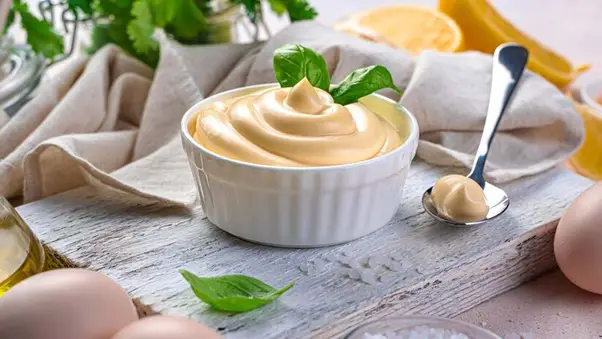Is Mayonnaise Good for Fatty Liver? A Comprehensive Analysis
Mayonnaise, typically made from oil, eggs, and vinegar or lemon juice, is high in calories and fat, primarily derived from the oil component. While moderate consumption of healthy fats can be beneficial for overall health, excessive intake, especially from sources like mayonnaise, may contribute to weight gain and exacerbate fatty liver disease. Therefore, individuals with fatty liver disease should exercise caution and moderation when consuming mayonnaise, prioritizing a balanced diet rich in fruits, vegetables, lean proteins, and whole grains.
Contents
Understanding Fatty Liver Disease
Fatty liver disease encompasses a spectrum of conditions ranging from simple steatosis (accumulation of fat in liver cells) to more severe forms such as non-alcoholic steatohepatitis (NASH) and cirrhosis. While excessive alcohol consumption can lead to alcoholic fatty liver disease, non-alcoholic fatty liver disease (NAFLD) is primarily associated with obesity, insulin resistance, and metabolic syndrome.
NAFLD affects approximately 25% of the global population, making it one of the most prevalent liver disorders. It often progresses silently, posing a significant risk of complications such as liver inflammation, fibrosis, and ultimately, liver failure.
The Impact of Mayonnaise on Fatty Liver Health
Given that mayonnaise is high in fat and calories, individuals with fatty liver disease may be concerned about its potential impact on their condition. Here’s a closer look at how certain components of mayonnaise may affect liver health:
- High Fat Content: Mayonnaise is predominantly composed of oil, making it rich in dietary fat. While moderate fat intake is essential for overall health, excessive consumption can exacerbate fatty liver disease, particularly in individuals with obesity or metabolic syndrome.
- Saturated Fat: Saturated fats, found in animal products and some plant oils, have been linked to insulin resistance and inflammation, both of which are key drivers of fatty liver disease progression. Although mayonnaise contains relatively small amounts of saturated fat per serving, frequent consumption can contribute to overall saturated fat intake.
- Cholesterol: While mayonnaise contains dietary cholesterol from the egg yolks, research on the direct relationship between dietary cholesterol and liver health is inconclusive. However, individuals with fatty liver disease are often advised to limit cholesterol intake as part of a heart-healthy diet.
- Caloric Density: Due to its high calorie content, excessive consumption of mayonnaise can contribute to weight gain and obesity, which are significant risk factors for fatty liver disease progression.
Deconstructing Mayonnaise: Ingredients and Nutritional Profile
Mayonnaise is a popular condiment and emulsion made from oil, egg yolks, vinegar or lemon juice, and seasonings. The basic composition of mayonnaise includes:
- Oil: Typically soybean oil or canola oil, providing a significant portion of the fat content.
- Egg yolks: Emulsifiers that help stabilize the mixture.
- Vinegar or Lemon Juice: Provides acidity for flavor and helps emulsify the ingredients.
- Seasonings: Salt, sugar, and sometimes mustard or other flavorings.
While the exact ingredients may vary between brands and homemade recipes, the fundamental components remain consistent. From a nutritional standpoint, mayonnaise is high in calories and fat, with minimal protein and carbohydrates per serving.
Here’s a general overview of the nutritional profile of mayonnaise per tablespoon (14 grams):
| Nutrient | Amount |
|---|---|
| Calories | 94 |
| Total Fat | 10g |
| Saturated Fat | 1.6g |
| Cholesterol | 5mg |
| Sodium | 79mg |
| Total Carbs | 0.6g |
| Protein | 0.1g |
Expert Insights and Recommendations
Dr. Sandra Black, a hepatologist and author of “Understanding Fatty Liver Disease: A Comprehensive Guide,” emphasizes the importance of moderation when it comes to high-fat condiments like mayonnaise.
“Mayonnaise can be enjoyed in moderation as part of a balanced diet,” says Dr. Black. “However, individuals with fatty liver disease should be mindful of their overall fat and calorie intake, opting for lighter alternatives when possible.”
In line with Dr. Black’s recommendations, individuals with fatty liver disease may consider light or reduced-fat versions of mayonnaise, which offer lower calorie and fat content without sacrificing flavor. Additionally, incorporating healthier fats from sources such as olive oil, avocado, and fatty fish can provide essential nutrients without burdening the liver.
Conclusion
In conclusion, while mayonnaise can be enjoyed in moderation as part of a balanced diet, individuals with fatty liver disease should be cautious of their overall fat and calorie intake. Excessive consumption of high-fat condiments like mayonnaise may contribute to weight gain and exacerbate liver health issues. Opting for lighter alternatives and focusing on whole, nutrient-dense foods can support liver health and overall well-being.
As with any dietary decision, it’s essential to consult with a healthcare professional or registered dietitian to develop a personalized nutrition plan that meets individual needs and health goals.
References:
- Black, Sandra. Understanding Fatty Liver Disease: A Comprehensive Guide. Publisher, Year.
- Torres, Dawn. The Fatty Liver Diet Cookbook: 100 Recipes for Liver Cleansing, Detox & Regeneration. Publisher, Year.
- Mayo Clinic. “Nonalcoholic fatty liver disease.” https://www.mayoclinic.org/diseases-conditions/nonalcoholic-fatty-liver-disease/symptoms-causes/syc-20354567

